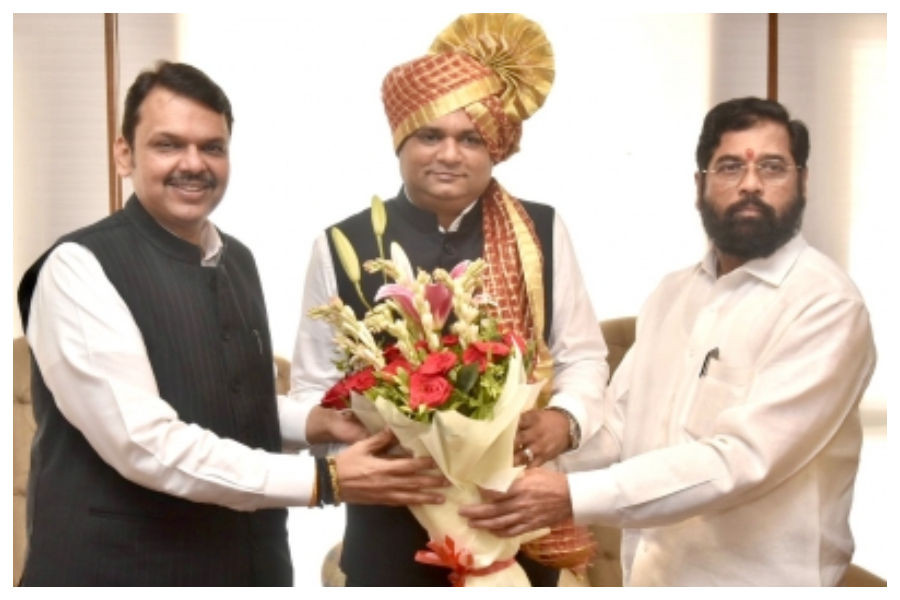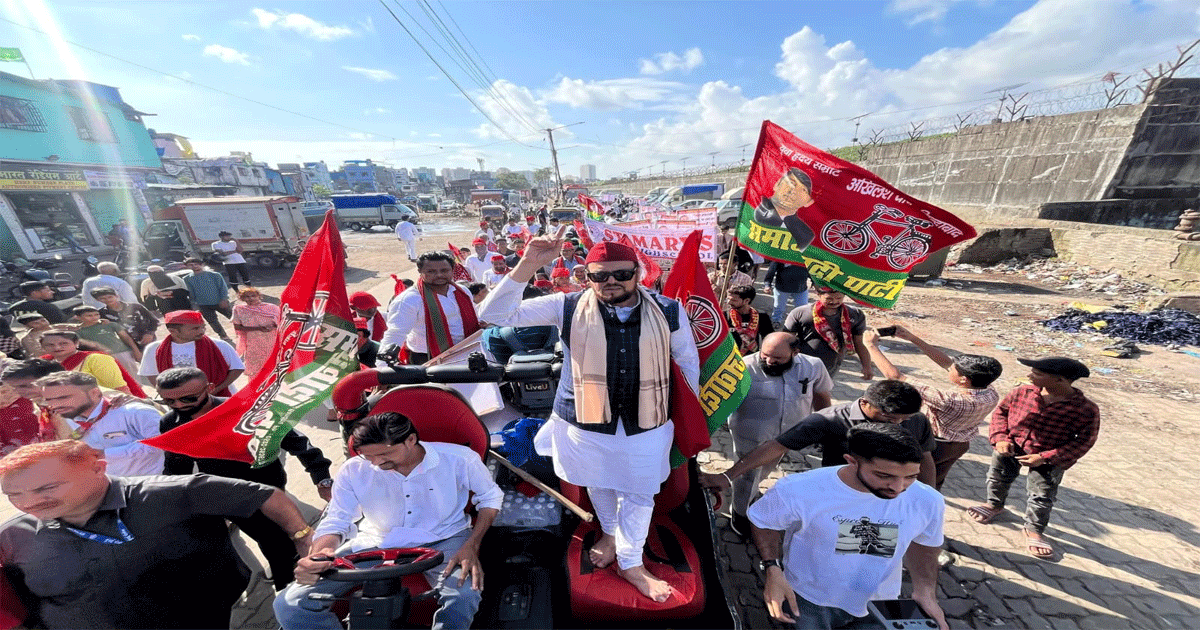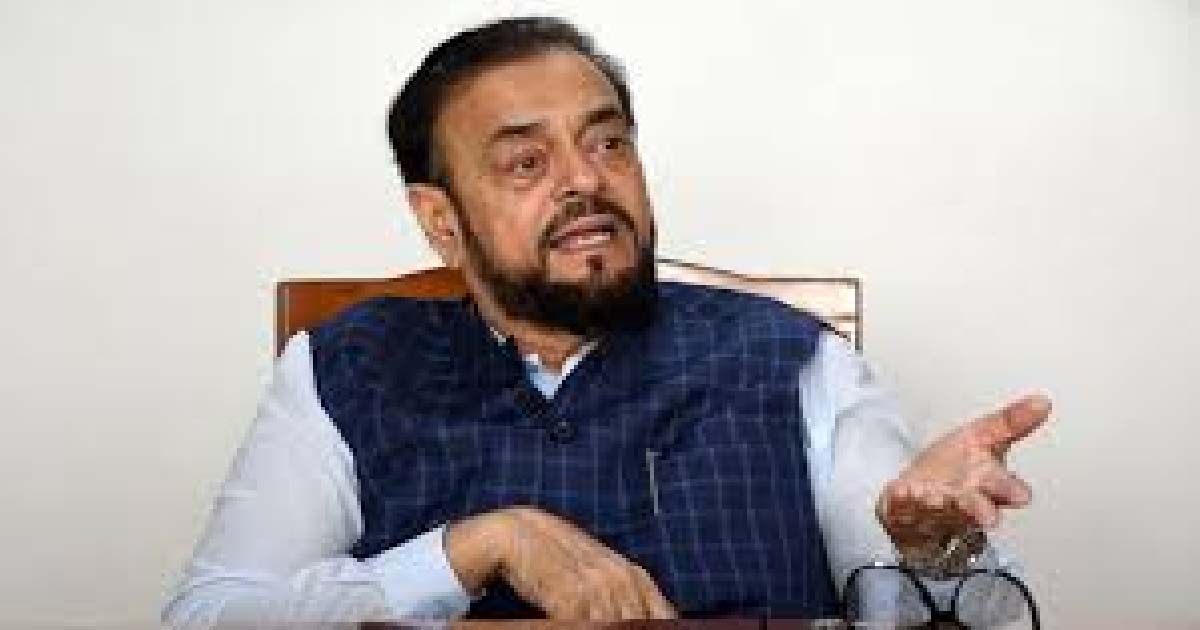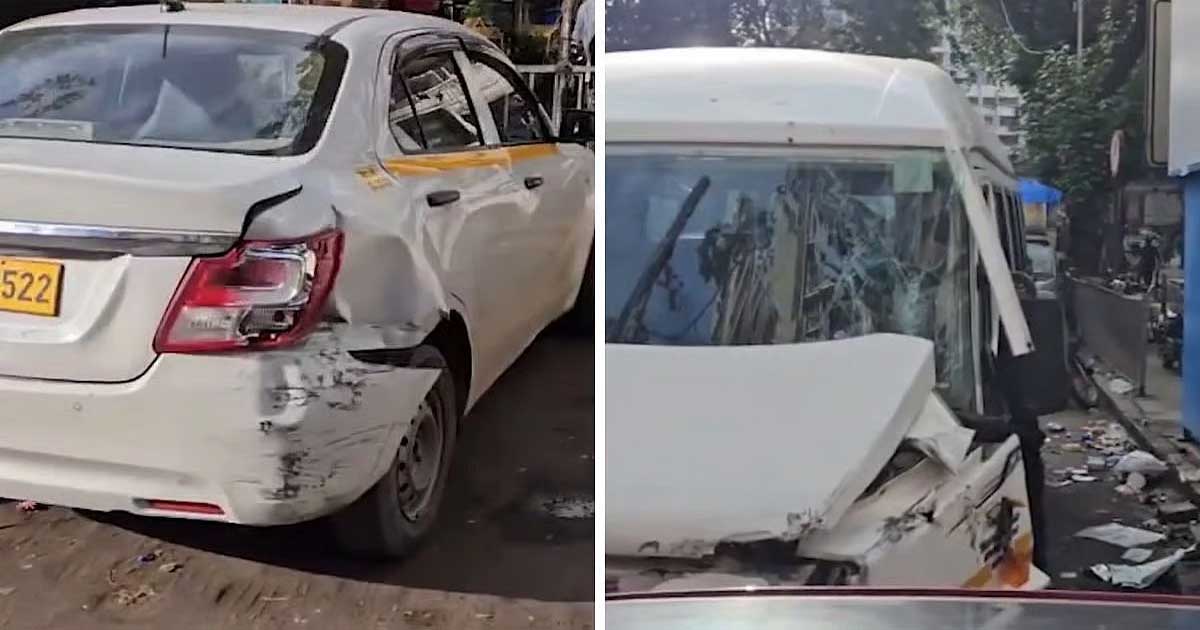Maharashtra
Maha Speaker, BJP’s Rahul Narwekar is India’s youngest in the august seat

Mumbai lawyer and first-time legislator, Rahul Narwekar, 45, has been elected as the youngest Speaker of Maharashtra Legislative Assembly and also becomes the youngest ever in India to hold this august Constitutional post, here on Sunday.
A Bharatiya Janata Party MLA from Colaba, Narwekar was elected to the high office at a Special Assembly Session, trouncing his sole Maha Vikas Aghadi-backed Shiv Sena nominee Rajan Salvi.
Interestingly, Narwekar is married to Sarojini, the daughter of Nationalist Congress Party’s Ramraje Naik-Nimbalkar, who is the Chairman of the Maharashtra Legislative Council.
Deputy Chief Minister Devendra Fadnavis, pointing out at the happy familial coincidence, said that now the ‘relation between the Upper House and Lower House is akin to a father-in-law and son-in-law’, amid cheers, as the new Speaker smiled.
However, Narwekar had served as a Governor Nominated MLC (Upper House) from 2016 before becoming MLA in 2019.
Hailing from a political family, the soft-spoken but sharp legal eagle Narwekar started his career with the Shiv Sena around late-1990s, but felt stifled due to lack of leadership opportunities.
After he was denied a ticket to the 2014 Lok Sabha elections, he quit the Sena in a huff and threw his lot with the NCP, where his father-in-law was already a senior leader.
The NCP rewarded Narwekar with a ticket from Maval Lok Sabha constituency in 2014, but he came a distant third to Shiv Sena’s winner Shrirang Barne and the runner-up PWP’s Laxman Jagtap and was compensated as an MLC.
Ahead of the 2019 Maharashtra Assembly elections, he hopped from the NCP to the BJP, which fielded him from Colaba in South Mumbai and secured his maiden victory to the Lower House.
Barely 31 months later, Narwekar scripted history to become the youngest legislator to be elected as the 16th Speaker (since 1960) and also is now the youngest ever lawmaker to occupy the coveted top legislative post in the country.
His father, Suresh Narwekar was a BrihanMumbai Municipal Corporation Municipal Corporator, his brother Makarand Narwekar is a two-term independent Municipal Corporator, and his sister-in-law Harshita Narwekar is also a BJP Municipal Corporator.
Shortly after his election was declared formally by the Deputy Speaker Narhari Zirwal, Chief Minister Eknath Shinde, Deputy Chief Minister Devendra Fadnavis, Congress President Nana Patole, NCP leader Ajit Pawar, and other senior Members escorted Narwekar to the Speaker’s ‘hot seat’ from where he would crack his Constitutional whip to run the House in order and legislative decorum.
Hailing Narwekar, top leaders of various parties expressed hopes that he would function in a judicious and impartial manner and carry forward the glorious traditions of the state Speakers, some of whom have gone ahead to many higher offices in public life.
Usually, the post of Speaker is held by senior legislators with years of experience and multiple tenures in the Lower House of Assemblies or Parliament, but a first-time lawmaker Narwekar’s elevation to the plum post has set a new trend in the country.
Maharashtra
Anti-drug rally of Govindi Samajwadi Party leader and MLA Abu Asim Azmi

Mumbai: A massive anti-drug rally was taken out today under the leadership of Samajwadi Party MLA Abu Asim Azmi to draw attention to the serious problem of drug addiction and illegal drug trade in Mankhurd Shivaji Nagar assembly constituency and to create public awareness against it.
Thousands of workers and local citizens participated in the rally. Protesters took to the streets and demanded strict action against the illegal drug trade and appealed to the youth to stay away from drugs.
The main objective of the rally was to free the youth of the area from the clutches of drugs and to put pressure on the administration to stop this illegal trade. Abu Asim Azmi himself led the rally and stressed the need for immediate and strict action against the drug problem in the area. Not only party workers but also a large number of mothers, sisters, young and old citizens of the area participated in the demonstration, highlighting the seriousness of the problem.
The drug problem in Mankhurd Shivaji Nagar constituency has been a topic of discussion for many years and it is badly affecting the lives of local citizens. By organizing this rally, MLA Azmi has once again shown his determination to solve this important problem faced by the citizens of his constituency. Speaking on the occasion, MLA Abu Asim Azmi warned the administration: “Immediate and strict action should be taken against those involved in the illegal drug trade, otherwise the Samajwadi Party and the local citizens will intensify the protest.” The rally proved to be an important rally in drawing attention to the social and health problems of the Mankhurdshivaji Nagar area.
Maharashtra
A new police station should be established in Govandi Shivaji Nagar. Maharashtra SP leader Abu Asim Azmi demands from Police Commissioner Devin Bharti

abu aasim aazmi
Mumbai: Maharashtra Samajwadi Party leader and MLA Abu Asim Azmi has demanded the establishment of a new police station in Shivaji Nagar constituency from Mumbai Police Commissioner Devin Bharti. He said that the old police station has been shifted to Mahada, which makes it very difficult to reach the police station from the SMS company area and it takes half an hour to an hour. In such a situation, a new police station should be established in Shivaji Nagar constituency. There has been an increase in drug abuse, crimes and other incidents in Shivaji Nagar and Govindi areas, along with an increase in the population here. It is necessary to establish a police station in proportion to the population, while the presence of police stations and personnel is not there in proportion to the population. He said that Police Commissioner Devin Bharti has said that after the recruitment of police, the police station will be established and manpower will be deployed in the police stations. Along with this, Abu Asim Azmi has also accused the local administration of irregularities in the distribution of funds along with the establishment of the police station. He said that now the corporation and The BMC election has not been held, there are Samajwadi Party corporators here but they are not being provided funds, but whoever joins the Shinde group is provided funds, this is complete injustice and therefore the funds should be distributed equally. He said that the government has no concern with the slum areas, the police presence will remain in Walkashore, Malabar Hill and Cuffe Parade, but there is no police presence in the slum areas and there is a shortage of them, that is why the bat chowki that we have built with our own funds in Govindi is also empty, there is no police personnel in it.
Maharashtra
Mumbai Accident: 1 Killed, 6 Others Injured As Speeding Tempo Traveller Crashes Into BEST Bus In Dadar

Mumbai: A speeding tempo traveller crashed into a BEST bus and two other vehicles in Dadar late Sunday night, killing one and injuring six, including three brothers. The victim was identified as Shahabuddin Zainulabdeen Shaikh, 37, a clothes vendor, said the Shivaji Park police, adding that medical examination confirmed that the driver, Sandesh Kumbhar, 27, was driving under the influence of alcohol.
Preliminary investigation revealed that Kumbhar, a resident of Wadala, was driving in a rash and negligent manner. According to BEST, the fatal mishap occurred around 11.30 pm near the Dadar Plaza bus stop, when a tempo traveller, heading towards Shivaji Park, lost control. It collided with the front right side of a BEST bus that was en route to Pratiksha Nagar from the Worli depot.
After crashing into the bus, the tempo traveller also struck a taxi and another tourist vehicle, damaging both. “The impact caused the bus to veer left, hitting pedestrians and passengers waiting at the stop. Shahabuddin, a pedestrian, died on the spot,” said an official.
Those injured were identified as brothers Rahul Padale, 30, Rohit Padale, 33, and Akshay Padale, 25. The remaining three are Vidya Mote, 30, Abhishek Rautkar, 24, and Abdul Nadir, 23. While Nadir is from Wadala, the rest are from Sion. They were immediately rushed to Sion Hospital with the help of the bus conductor and local police personnel. The police have registered a case of accidental death against Kumbhar.
-

 Crime3 years ago
Crime3 years agoClass 10 student jumps to death in Jaipur
-

 Maharashtra1 year ago
Maharashtra1 year agoMumbai Local Train Update: Central Railway’s New Timetable Comes Into Effect; Check Full List Of Revised Timings & Stations
-

 Maharashtra12 months ago
Maharashtra12 months agoMumbai To Go Toll-Free Tonight! Maharashtra Govt Announces Complete Toll Waiver For Light Motor Vehicles At All 5 Entry Points Of City
-

 Maharashtra1 year ago
Maharashtra1 year agoFalse photo of Imtiaz Jaleel’s rally, exposing the fooling conspiracy
-

 National News12 months ago
National News12 months agoMinistry of Railways rolls out Special Drive 4.0 with focus on digitisation, cleanliness, inclusiveness and grievance redressal
-

 Maharashtra11 months ago
Maharashtra11 months agoMaharashtra Elections 2024: Mumbai Metro & BEST Services Extended Till Midnight On Voting Day
-

 National News1 year ago
National News1 year agoJ&K: 4 Jawans Killed, 28 Injured After Bus Carrying BSF Personnel For Poll Duty Falls Into Gorge In Budgam; Terrifying Visuals Surface
-

 Crime12 months ago
Crime12 months agoBaba Siddique Murder: Mumbai Police Unable To Get Lawrence Bishnoi Custody Due To Home Ministry Order, Says Report












